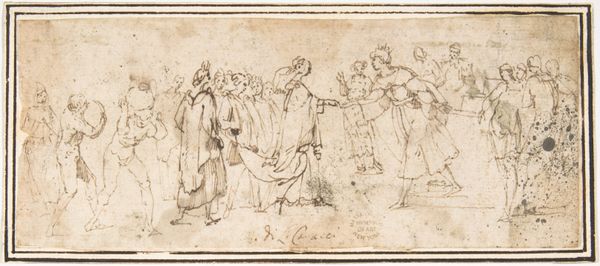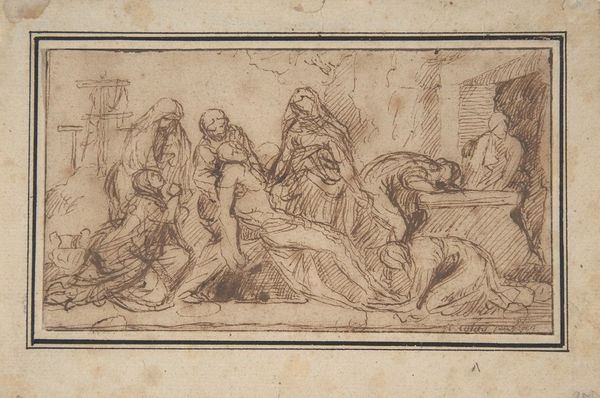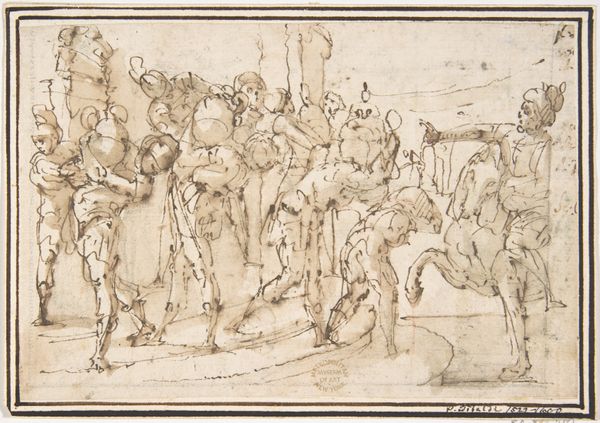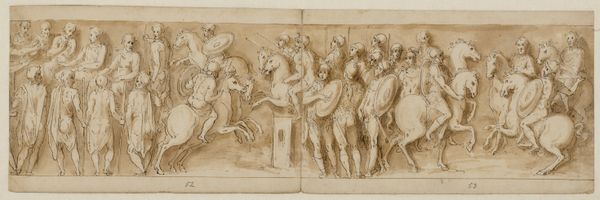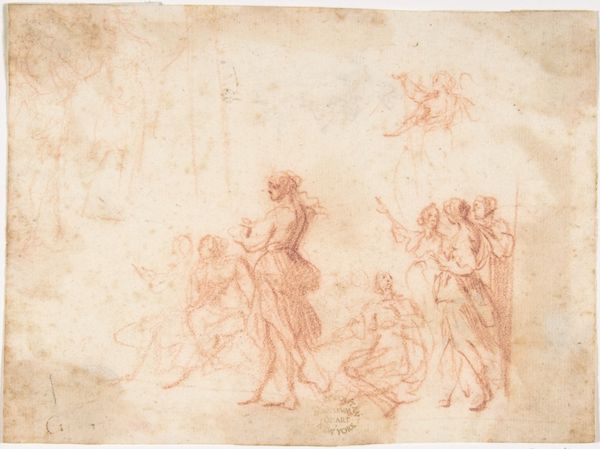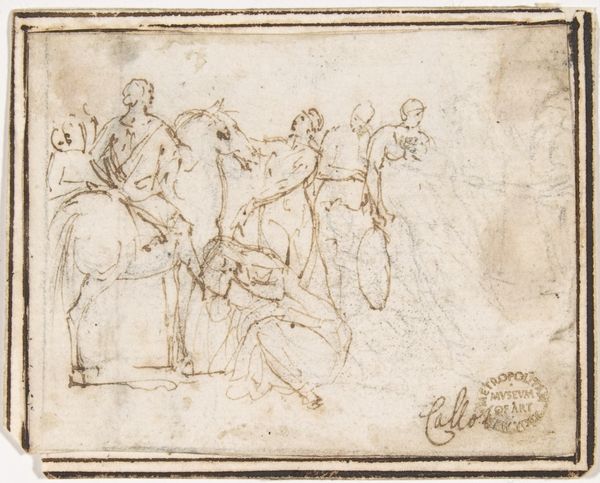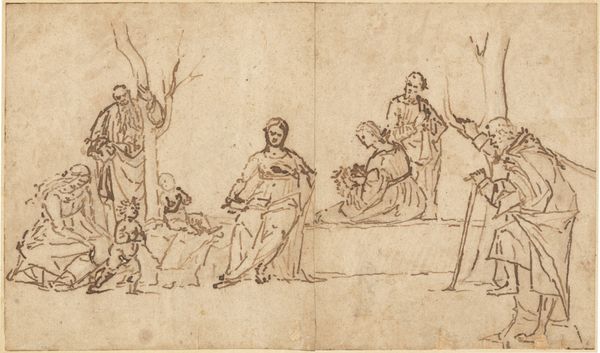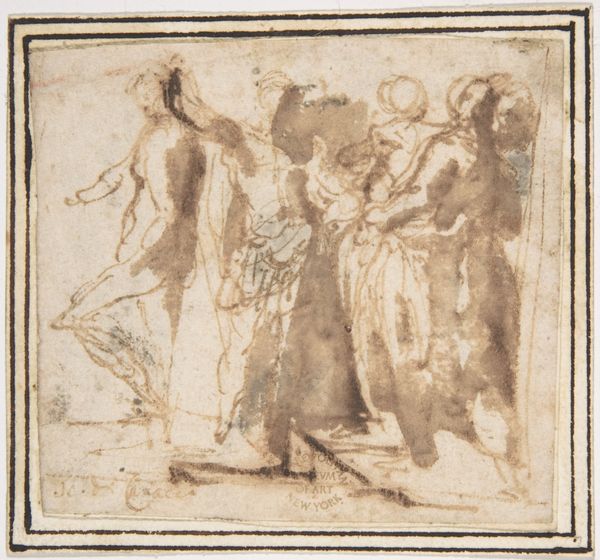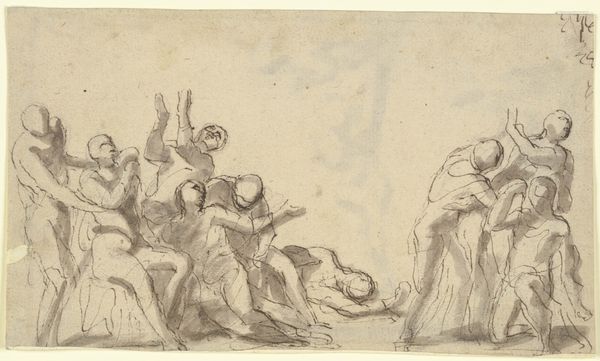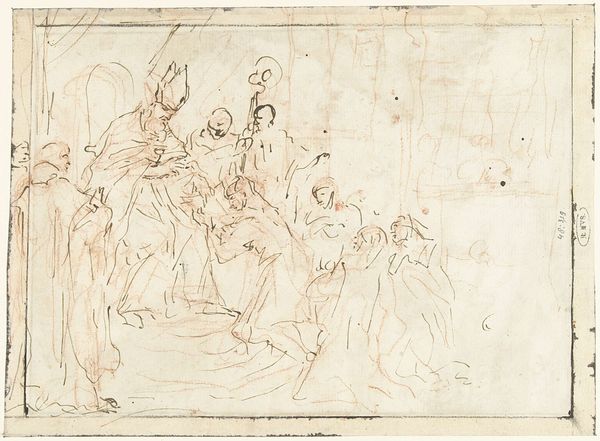
drawing, ink, pen
drawing
narrative-art
baroque
ink painting
figuration
charcoal art
ink
men
pen
history-painting
Dimensions: 3-1/8 x 7-1/16 in. (8.0 x 17.9 cm)
Copyright: Public Domain
Curator: Here we have Francesco Allegrini’s, "The Rape of the Sabines," created between 1624 and 1663. It’s an ink drawing. Editor: My immediate impression is…frenetic. Bodies caught mid-motion, tangled up. A flurry of limbs and fabric and desperation. Is everyone alright? Curator: This drawing depicts a key foundational myth of Rome, where the early Romans, needing wives, invited the neighboring Sabine tribe to a festival and then abducted their women. It’s been a popular subject in art, representing themes from masculine violence to Roman identity. Editor: So, history painting as a means of nation-building. And it looks as messy and ethically dubious as that sounds. Allegrini captures that chaos with these scratchy lines. You can almost feel the panic rising off the page. It lacks grace and celebrates the urgency. Curator: Absolutely. The Baroque style lends itself to dramatic compositions, full of movement and emotional intensity. Allegrini’s work invites viewers to contemplate the darker aspects of the myth—the violence inherent in establishing a nation. We, as citizens of modern nations, should also see it that way. Editor: Do you think the artist meant for us to cheer on these Romans? I am more struck by the women in disarray. Curator: The historical context suggests otherwise. These works, were generally commissioned to reinforce Roman power. But as centuries passed the narratives shifted based on our own socio-cultural sensibilities. Today, Allegrini's "Rape of the Sabines," serves as a stark visual of early patriarchal power and aggression. The value of this work, now, resides in being critical of our own cultures and not simply a display of what once was. Editor: Which makes you wonder about art's ability to be repurposed like that—used to prop up power and then, centuries later, poked at it like a sore tooth. Curator: Indeed. Ultimately, art is a reflection of ourselves. It has served as a mirror through the ages to see who we were, and if we choose to look, what we may risk becoming again. Editor: It feels like Allegrini left the composition a bit open ended so it may evolve with the times, literally. A messy tale, hastily drawn, but profoundly reflective.
Comments
No comments
Be the first to comment and join the conversation on the ultimate creative platform.
